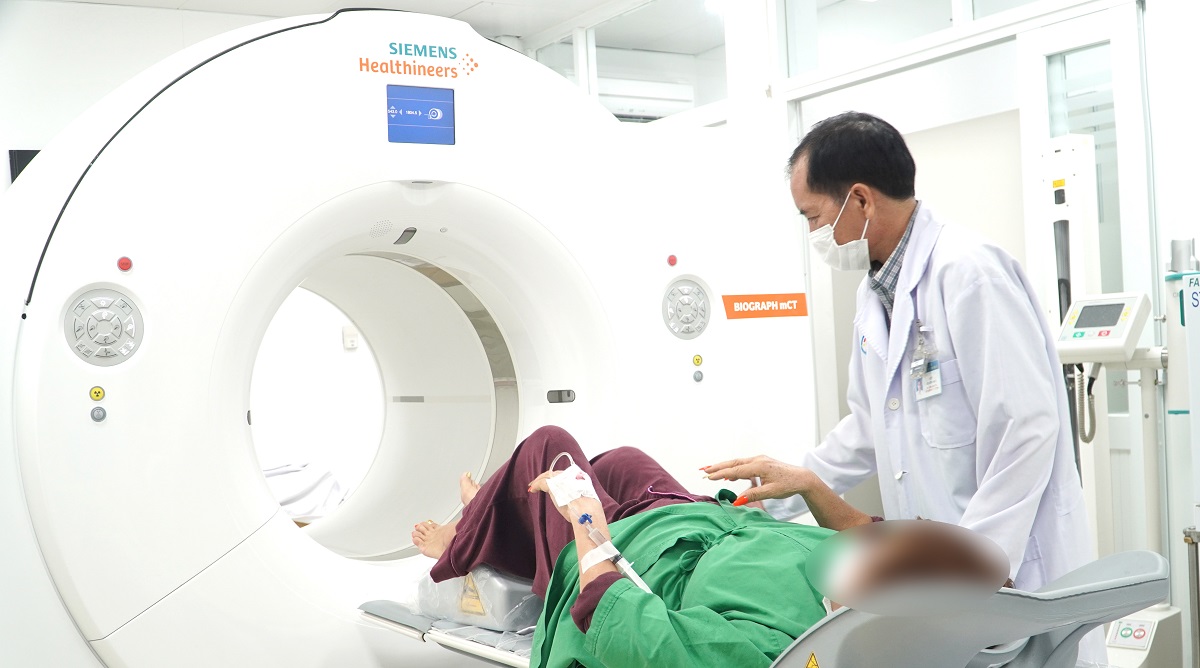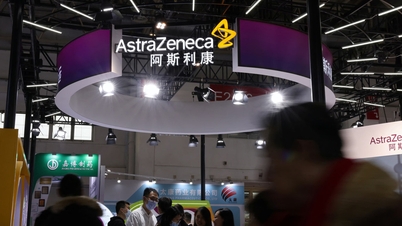On December 5, Dr. Nguyen Xuan Canh, Head of the Department of Nuclear Medicine, Cho Ray Hospital, said that the unit had recorded PET/CT images with two new radioactive drugs, namely Galium-68 PSMA (Ga-68 PSMA) in prostate cancer and Galium-68 Dotatate (Ga-68 Dotatate) in neuroendocrine tumors to help diagnose and monitor treatment of the disease.
Worldwide , these two radioactive drugs are widely used for patients and have been approved by the US Food and Drug Administration (FDA) (in 2020 with Ga-68 PSMA and in 2016 with Ga-68 Dotatate). Not every country can produce Ga-68 PSMA and Ga-68 Dotatate, so when domestic patients need to have a PET/CT scan with these two drugs, they usually have to go abroad.
After a long period of research, professional exchange as well as preparing human resources to focus on research, on November 7, 2023, the Department of Nuclear Medicine, Cho Ray Hospital was also the first unit in Vietnam to successfully prepare and put into use two drugs, Ga-68 PSMA and Ga-68 Dotatate. After nearly a month of applying PET/CT imaging with Ga-68 PSMA for 12 cases of prostate cancer and PET/CT with Ga-68 Dotatate for 9 cases of neuroendocrine tumors, the results showed the effectiveness of these two techniques in diagnosing and monitoring disease treatment.
PET/CT technology is a high-tech imaging diagnostic system with great potential for many advantages in diagnosing and monitoring the treatment of diseases such as cancer, neurological and cardiovascular diseases. This technology has been applied at Cho Ray Hospital since 2009, on average the Nuclear Medicine Department receives 12-15 PET/CT scans per day.

Patients undergo PET/CT imaging with new radioactive drugs
Dr. Canh added that Cho Ray Hospital has been performing PET/CT imaging with F-18 FDG to evaluate glucose metabolism in many types of cancer since 2009. However, because prostate cancer cells and neuroendocrine tumor cells often use little glucose, the diagnostic results are not high.
Prostate cancer cells often express specific antigen on the cell membrane PSMA (10-80 times higher than normal prostate cells or benign hyperplasia) which has good binding properties to Ga-68 PSMA and will be detected by PET/CT imaging.
As for neuroendocrine tumors, tumor cells express increased Somatostatin receptors and PET/CT imaging with Ga-68 Dotatate drug binding to this receptor will detect primary and metastatic lesions more clearly. This helps clinicians to diagnose, stage, choose treatment methods and monitor treatment results.
The successful preparation of two drugs, Ga-68 PSMA and Ga-68 Dotatate, opens up many opportunities for domestic patients, helping them access new advanced techniques in the world, contributing to improving the quality of medical examination and treatment as well as saving a lot of costs for patients.
thanhnien.vn Source link




![[Photo] Prime Minister Pham Minh Chinh chairs a meeting on the implementation of the Lao Cai-Hanoi-Hai Phong railway project.](https://vphoto.vietnam.vn/thumb/1200x675/vietnam/resource/IMAGE/2025/5/20/0fa4c9864f63456ebc0eb504c09c7e26)






























































































Comment (0)